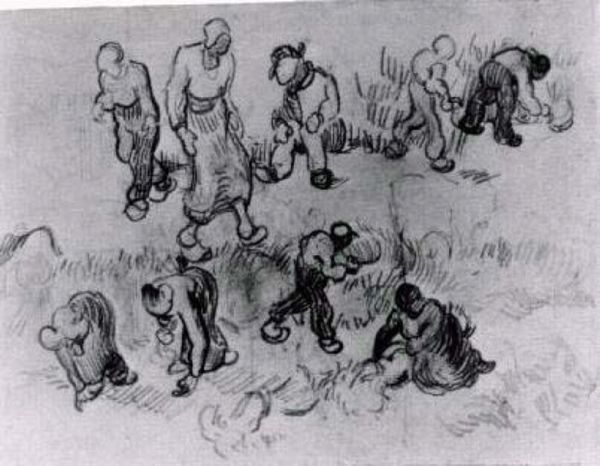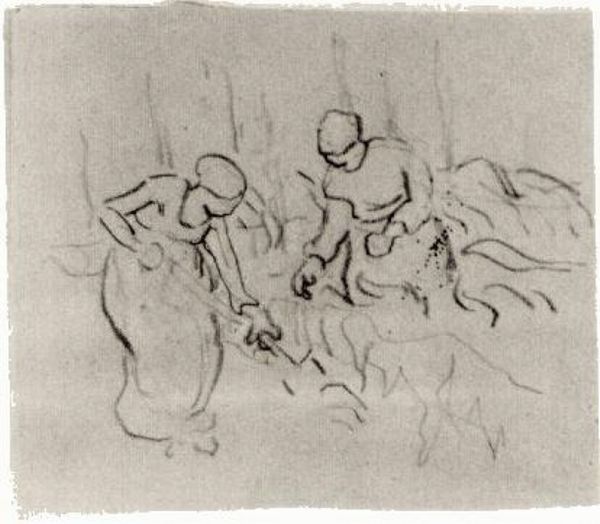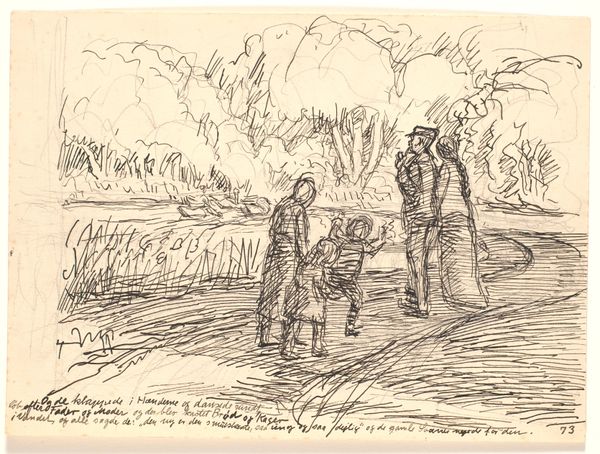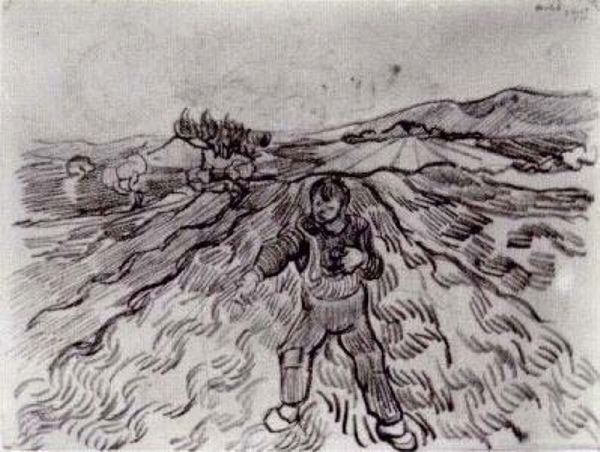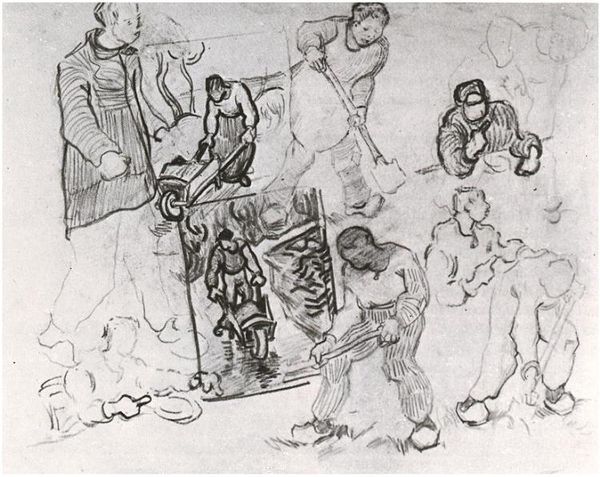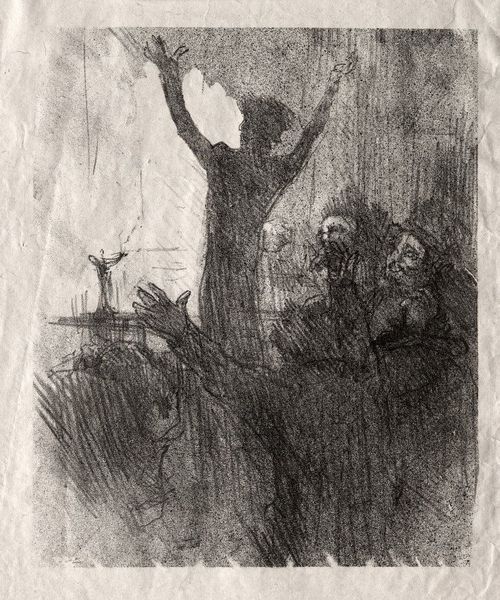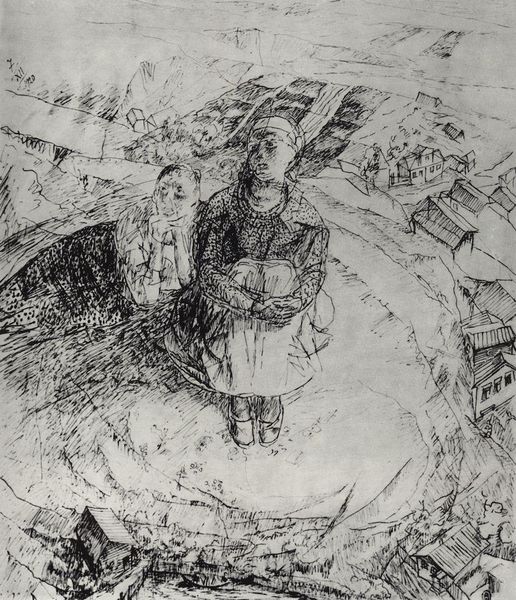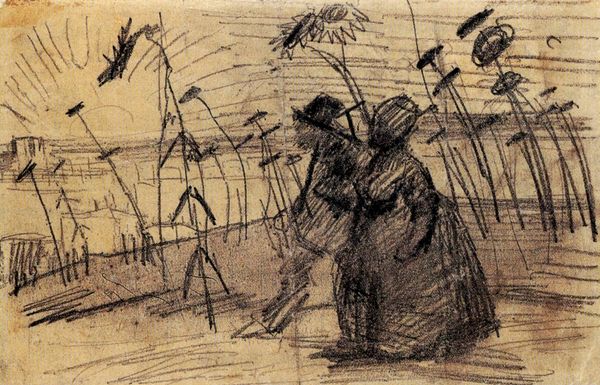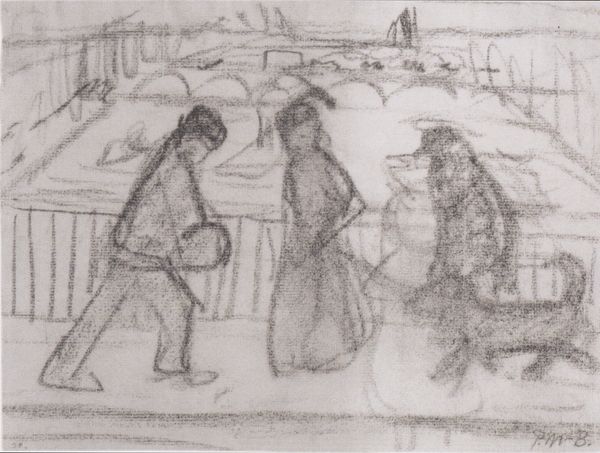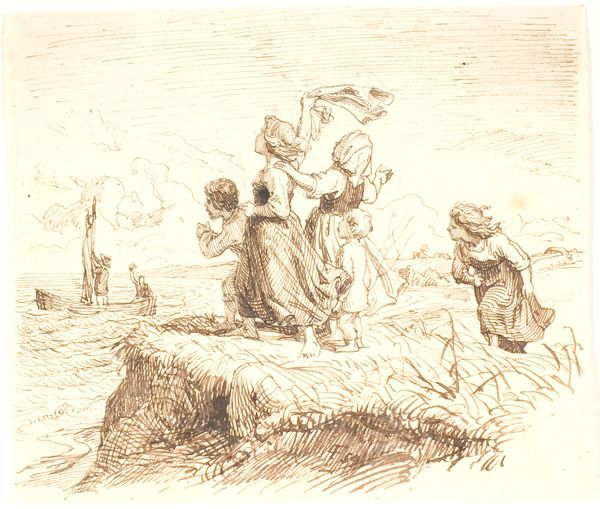
Couple Arm in Arm and Other Figures, with a Windmill in the Background 1890
0:00
0:00
drawing, pencil
#
portrait
#
drawing
#
amateur sketch
#
impressionism
#
pencil sketch
#
incomplete sketchy
#
landscape
#
figuration
#
linework heavy
#
idea generation sketch
#
sketchwork
#
sketch
#
pen-ink sketch
#
pencil
#
rough sketch
#
pen work
#
post-impressionism
#
initial sketch
Copyright: Public domain
Editor: So, this is "Couple Arm in Arm and Other Figures, with a Windmill in the Background" by Vincent van Gogh, made around 1890. It's a pencil drawing. It feels like a fleeting moment, like catching a glimpse of rural life. I'm curious, how do you interpret this work considering the context of Van Gogh's life and the art world at the time? Curator: It's crucial to remember where and when Van Gogh created this. While seemingly a simple scene of rural life, we need to see it as part of the larger institutional structure of art at the time. Consider the rise of industrialization and urbanization; what role did pastoral scenes like this play in the cultural imagination of late 19th century Europe? Van Gogh, though striving for recognition in the formal art world, often depicted the lives of the working class and rural poor. Does this suggest any particular message given its status today on museum walls? Editor: That’s a really interesting point. It almost feels like the museum is elevating something that Van Gogh saw as everyday life, turning it into something "special." Do you think that changes its meaning? Curator: Absolutely. The act of exhibiting it within a museum immediately changes the viewer’s relationship to the work. We have to ask: Who gets to decide what’s art and whose stories are deemed worthy of preservation and display? Museums shape our understanding of the past and can influence contemporary values, sometimes reinforcing existing power structures. It's crucial to remember the cultural weight that museums carry when encountering works like this. Editor: I never really thought about how much museums contribute to shaping what we value historically. That’s definitely something I'll keep in mind from now on. Curator: Indeed. Seeing art through a historical lens reminds us of art’s active role in reflecting, reinforcing, or even challenging social norms. It's more than just aesthetics.
Comments
No comments
Be the first to comment and join the conversation on the ultimate creative platform.

